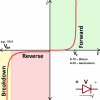Yup. Keyboard-related stuff just takes more strokes/more effort/more manual precision on Apple than on Android. Having used both side-by-side on a daily basis for the last six years, I can confidently say that Apple has some catching up to do.I may have to try that with my work phone. I absolutely despise the iPhone keyboard after using Androids all of these years. The iPhone seems to be the poster child for inefficiency in that particular area. Only thing I really like better is the facial recognition feature. They did that right and Samsung really dropped the ball in that.
An explicit solution is one where the output does not depend on itself, i.e.
V = f(Vin)
An iterative implicit solution is where you have to iterate an equation to get the result. For example consider a hypothetical component where the current is a function of the voltage. I.e.
I = f(V)
In a series circuit with a resistor the voltage across the device would be
V = Vin - I*R = Vin - f(V)*R
Let's say the function is I = V^2
So then
V = Vin - V^2 * R
V is on both sides of the equation. One way to solve this is using Newton's method (x = x - f(x)/f'(x)). But that takes a lot of time because you have to keep iterating until the error is below some desired value. You also have to use the derivative which adds computations. The other problem is stability/convergence. Sometimes the solution "blows up" and doesn't converge. This is unacceptable in a real-time system.
A resistor in series with a diode results in an equation with an exponential (or log) function that needs to be solved along with its derivative.
Now when you add a capacitor in parallel with the diode you complicate things even further because now you have a nonlinear ordinary differential equation (ODE). So the current is not only a function of the voltage, the voltage has "memory" due to the capacitor. Solving these types of networks is extremely time consuming. Things like SPICE use implicit solutions like Runge-Kutta 4 (RK4).
I've been working on this for a while and came up with a semi-explicit solution that doesn't require iteration, has the accuracy of implicit solutions and is nearly as fast as explicit solutions.
This is a graph of a 1K resistor in series with a diode. The blue trace is the reference and was derived by solving the network using Newton's method. The red trace is the semi-explicit solution. If you can't see the blue trace that's because the red trace is nearly exactly on top of it.
View attachment 71052
On the Axe-Fx III solving the network using Newton's method uses over 30% CPU. The semi-explicit method is around 6%.
People tell me they love Siri, but I couldn't resist the temptation to ask a lot of really ridiculous stuff. She would probably uninstall herself within a week.I’m just the opposite. I’ve used an iPhone since the iPhone 3. My work phone is an android and I don’t think I’ll ever get used to it.
I am sure it's a placebo, but the amps sound better for me as well! Even the reverb!
I'm using Gboard... I was using Swype but I believe they stopped supporting it or it stopped working correctly.I knew you were. Made me laugh when I saw how I typed it too. Lol
I may have to try that with my work phone. I absolutely despise the iPhone keyboard after using Androids all of these years. The iPhone seems to be the poster child for inefficiency in that particular area. Only thing I really like better is the facial recognition feature. They did that right and Samsung really dropped the ball in that.
I have GBoard, but have used it in the same manner as I use my Samsung keyboard. I may have to try to set it to the other method for swiping. Hard to change habits when you are relatively proficient in the methods you are used to. (Minus the thumb typos. LOL}I'm using Gboard... I was using Swype but I believe they stopped supporting it or it stopped working correctly.
New firmware and Cliff is dropping non iterative solutions to nonlinear ODE's - both sides of my brain are very happy right now. Looking forward to checking this out.
I'd totally take an "Applied Mathematics for Electric Guitar" course if Cliff was teaching it too.

New firmware and Cliff is dropping non iterative solutions to nonlinear ODE's - both sides of my brain are very happy right now. Looking forward to checking this out.
I'd totally take an "Applied Mathematics for Electric Guitar" course if Cliff was teaching it too.

